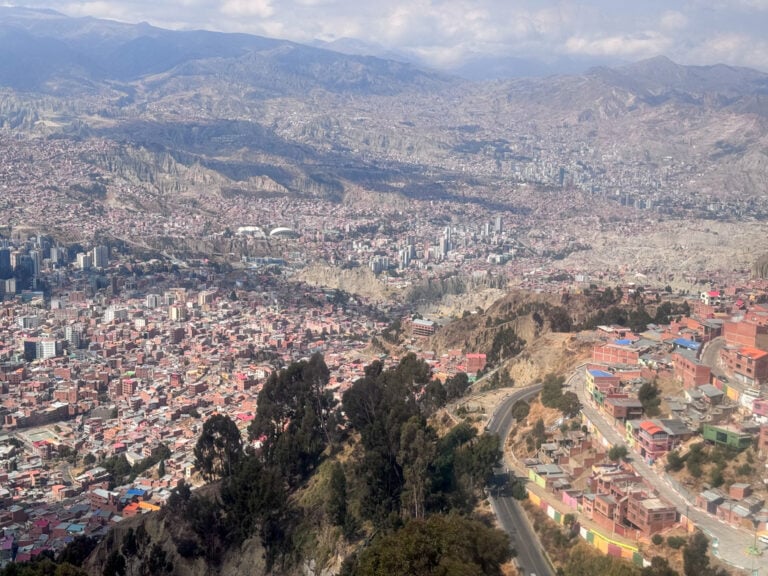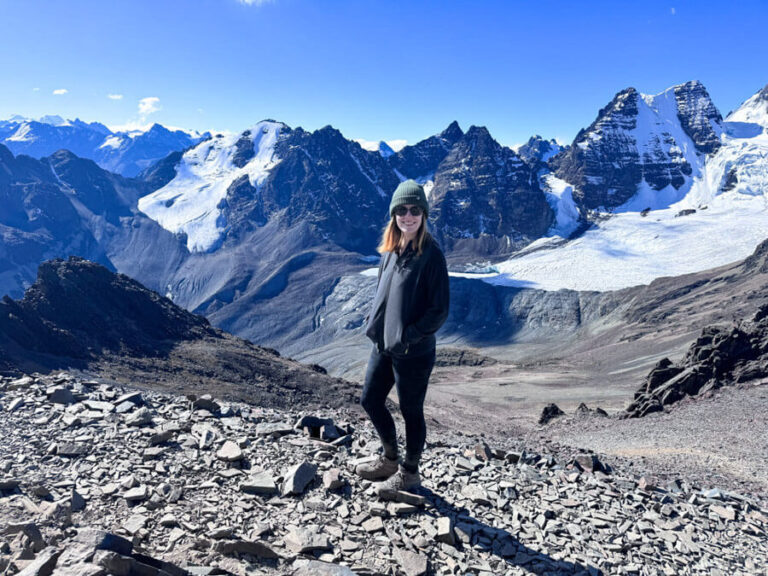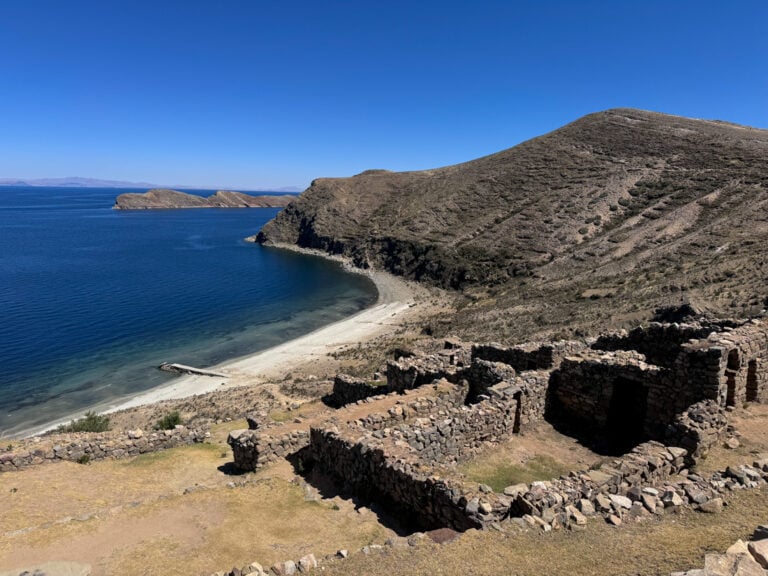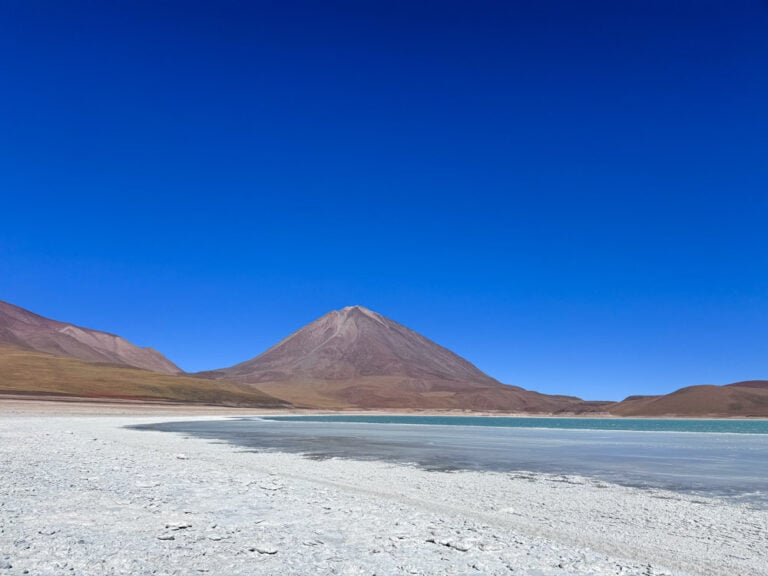Visit the Cal Orck’o Dinosaur Footprints in Sucre, Bolivia

When planning my solo trip to Bolivia, I was surprised to learn that the country is home to one of the world’s largest collections of genuine dinosaur footprints. Yes, you heard that right! The country is mainly on the backpacker map thanks to the famous Salar de Uyuni, but in reality, Bolivia is filled with epic places to visit and unique things to do (including seeing real-life dinosaur footprints!).
You can see dinosaur footprints in several areas, including Torotoro National Park and the Maragua Crater, but the best place to see them is Parque Cretácico/Cal Orck’o (Cretaceous Park) in Sucre. This famous spot is where you’ll find one of the world’s largest collections of dinosaur footprints (if not the world’s largest collection) from eight different dinosaur species.
The best part about Cal Orck’o is how accessible and affordable it is. There’s no intense hike, and minimal planning is required. In this post, I’ve shared all you need to know about how to see the dinosaur footprints in Sucre.
About Cal Orck’o
Sucre’s dinosaur park, also known as Cal Orck’o or Parque Cretecico, is home to a vast collection of dinosaur footprint tracks. In fact, this spot is one of the best places in the world to see dinosaur footprints and tracks.
Side note: If you’re planning a bigger trip to South America or Latin America, don’t miss visiting La Leona Petrified Forest in Patagonia. Here, you’ll find hundreds of dinosaur fossils and petrified trees.
The dinosaur footprints in Sucre can be found in a nearby limestone quarry. The tracks are vertical on a huge limestone wall, but no… dinosaurs didn’t walk up walls (that we know of!). The limestone wall was once horizontal, but due to tectonic activity, the tectonic plates shifted and caused the wall to become vertical. Thanks to a mixture of weather and perfect climate conditions, the footprints have been preserved.

The footprints are believed to have been formed around 68 million years ago during the Cretaceous Period. However, they weren’t discovered until 1985 when mining began for limestone. Sadly, there’s been a lot of damage to the footprints thanks to the mining. The government has submitted the site to become a UNESCO World Heritage Site to protect the site, but this has been unsuccessful so far.
While there are estimated to be over 5,000 footprints and 12,000 tracks, only a few are available for visitors to see in the park. Even so, it’s still an impressive sight!
It’s believed that different types of dinosaurs made the footprints, including the Ankylosaurus and Titanosaurs. There’s even footprints from a baby T-rex which has been nicknamed Johnny Walker.
How to visit the dinosaur footprints
If you’re keen to walk in the footsteps of dinosaurs, the great news is that it’s relatively easy to arrange. Cal Orck’o is just over four miles (7 km) from the city center of Sucre, one of the best places to visit in Bolivia.
Getting there
The easiest way to the Parque Cretácico is to use the free dinosaur bus! The shuttle bus departs from Plaza 25 de Mayo throughout the day and drops you right at the park’s entrance.
You’ll find the bus in front of the cathedral 11 am and 12 pm. There are buses at 9:30 am and 1 pm during the busier periods, but you’ll miss the quarry tours if you go for these, so I’d aim for 11 am or 12 pm.
As of July 2024, the shuttle bus costs 15 Bs return ($2), an extra cost to the entrance to the park. There are return buses at 1:30 pm, 2:30 pm and 4 pm. I’d suggest confirming these times with the driver in case anything has changed since I visited.
It’s also possible to get the local bus to the park (number 4 bus). However, this can take a long time and is more complicated. While it’s a bit touristy, I recommend using the park’s shuttle bus. If you do opt for the local bus, the park is the last stop so it’s hard to miss.
There’s also the option to take a taxi.


Important things to know
The tours of the dinosaur footprints are only at 12 pm and 1 pm every day (except Mondays when the park is closed). These are the only times you can enter the quarry and get up close and personal with the footprints. If you visit outside of these hours, be aware that you won’t be able to enter the quarry.
The park is open every day except Monday from 9 am to 5 pm (and 10 am to 5 pm on Saturdays and Sundays). Please be aware that I don’t think the Cal Orck’o is worth visiting unless you plan to visit the quarry (although young children may enjoy the main park). There is a viewing platform for the dinosaur tracks, but it’s nowhere near as good as entering the quarry.
Note: I do my best to provide accurate information, but keeping everything up-to-date is impossible. I recommend checking the latest opening hours information before visiting. The park doesn’t seem to have an official website, but your accommodation in Sucre should have the latest information. Feel free to contact me if anything has changed since I’ve written this post.
Once you’ve paid for entry to the park, tour guides are usually on standby to divide you into English-speaking and Spanish-speaking groups.
There’s some mixed information online about how the tours work, but based on my experience, they include a tour of the main park (mostly life-size models of dinosaurs and fossils) before taking you down into the quarry.
I arrived at 11:30 am and had a quick tour before entering the quarry at noon.
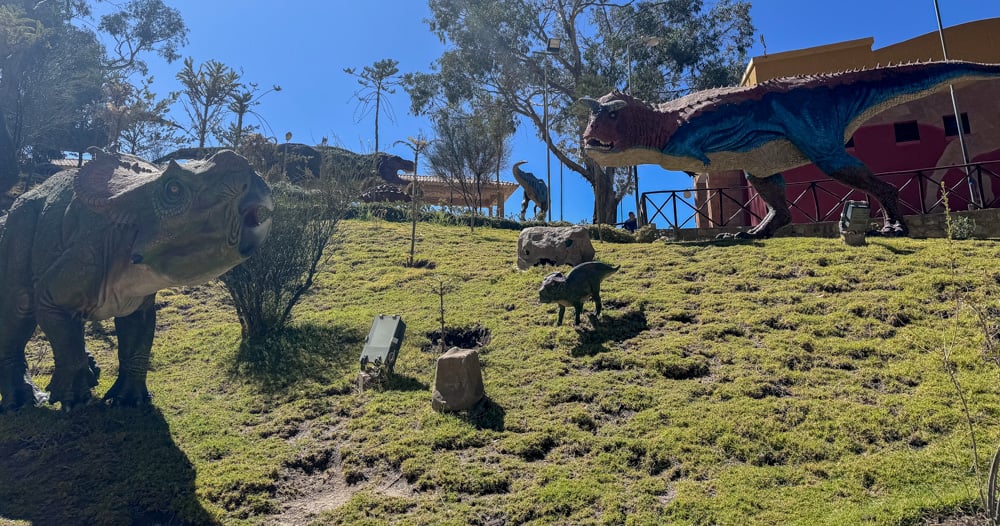
Here are a few other notes about the experience:
- Wear sensible shoes: The walk down into the quarry is very steep and has some loose rock. The guides would not let people enter unless they had closed-toe shoes.
- Be prepared for a steep climb: You exit the quarry the same way you entered, which means walking back up the steep incline.
- It’s an active quarry: The quarry is still in use, so be prepared for some noisy vehicles.
- You can’t touch the footprints: You won’t be able to touch the footprints, as doing so can damage the limestone rock.
Lastly, you’ll need to pay 30 Bs ($4.30) to enter the park, this is on top of the bus fare. I had heard that they also charge you 5 Bs ($0.70) to take photos of the footprints, but this wasn’t the case when I went, and we were allowed to take as many pictures as we liked for free.

A review of my experience
Sucre was my first stop in Bolivia after the Wild West town of Tupiza, so I wasn’t sure what to expect. Seeing the dinosaur footprints was very high on my Bolivia bucket list, so I decided to spend my first morning exploring the Sucre Dinosaur Park.
Finding the bus was a lot easier than expected. It’s pretty hard to miss a giant red double-decker bus covered in dinosaurs. It was still the school holidays in Bolivia, so the bus was quite busy, but I was able to get a space.
I caught the 11 am bus, which took about 20 minutes to get to the park. After paying the entry fee, an English-speaking tour guide was waiting, and I joined a handful of other non-Spanish speakers. Before entering the quarry, you’ll receive a tour of the park.
My initial reaction to the park wasn’t great. It’s very touristy and aimed at young people. You’ll find many plastic life-size dinosaur replicas, a gift shop and a cafe. After the tour guide took us around the dinosaur replicas, he pointed out the museum which contains fossils (and looked a lot more interesting than plastic dinosaurs). It’s sometimes possible to have guided tours of the museums, but they weren’t operating on the day I went.
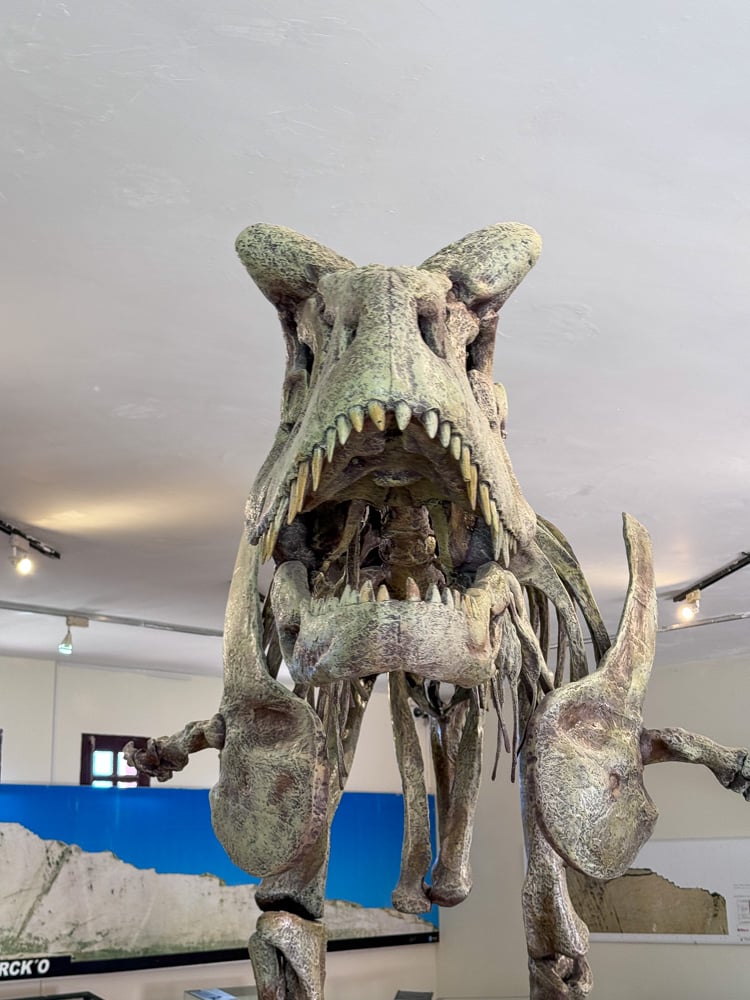

After about 20 minutes, we went to the quarry entrance where we were given a safety briefing and a helmet to wear. The guided tour of the quarry is in English and Spanish, so you’ll need to listen to the explanation in both languages.
It was finally time to make our way into the quarry and see the footprints up close. This part of the tour took around 45 minutes. Our fantastic guide explained why we can see the footprints, why they are vertical, and also the different species of dinosaurs responsible for the prints.
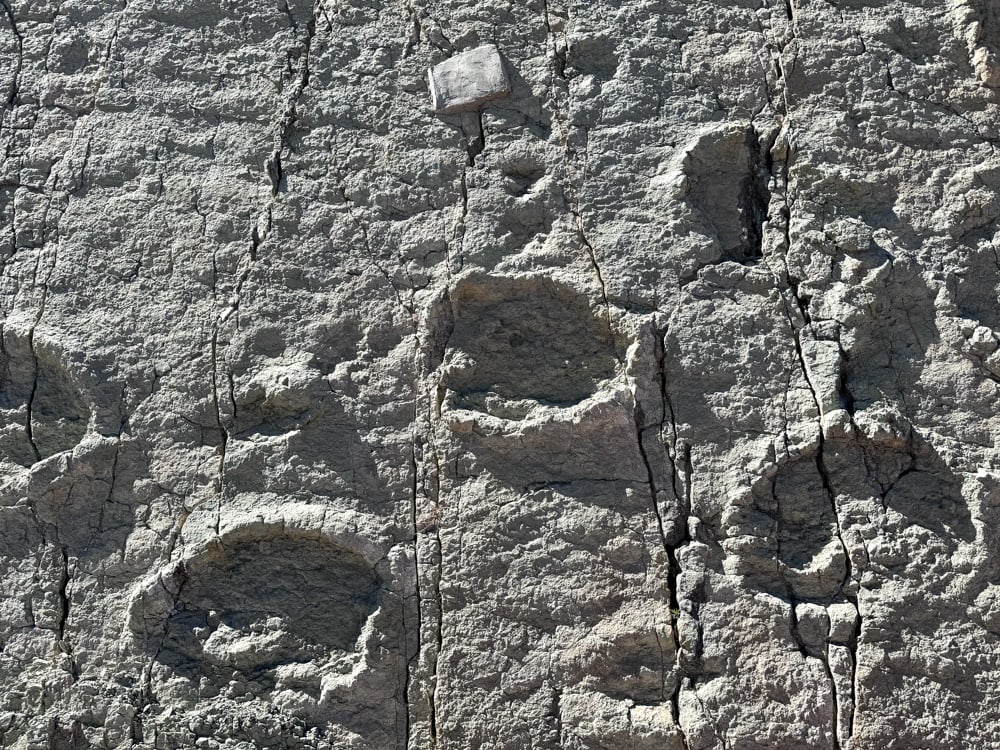
In all honesty, I found it very impressive! The cliff face is filled with different footprints, and it blew my mind that they still exist in this way today.
After taking some photos, we made our way back up to the main park. I paid a quick visit to the museum and viewing area before returning to Sucre.
Overall, I think visiting the dinosaur prints is one of the best things to do in Sucre. It’s fascinating to learn about them and such a cool experience to see them up close (especially the baby T-rex prints, aka Johnny Walker).
Away from the quarry, the park is very touristy and aimed at children, so just prepare yourself for that (and lots of screaming children). Despite this, I found it interesting and it’s well worth visiting.
Thanks for reading! I hope this was helpful.

